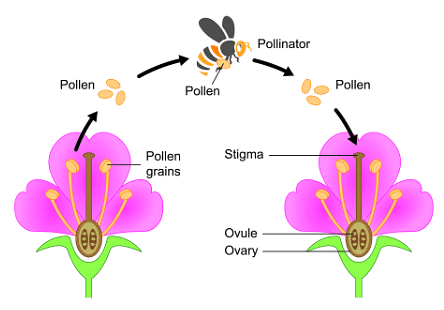Class 10 Science Chapter 7 Question Answers - How Do Organisms Reproduce
Q1: What is reproduction?
Ans: Reproduction is the process by which an organism produces its young ones for the perpetuation of its race.
Q2: Mention two modes of reproduction.
Ans: The two modes of reproduction are sexual reproduction and asexual reproduction.
Q3: Give one example for each of the following.
(а) Plants in which vegetative propagation occurs by grafting.
(b) Plants in which vegetative propagation occurs by leaves.
Ans: (a) Rose, grapes can be vegetatively propagated by grafting.
(b) Bryophyllum can be vegetatively propagated by leaves.
 Grafting
Grafting
Q4: Name a plant that has lost the capacity to produce seed. How can it reproduce?
Ans: Banana. It can reproduce by vegetative propagation.
Q5: Name any two consequences of unsafe sex.
Ans: The two consequences of unsafe sex are:
- Transmission of sexually transmitted diseases
- Unwanted pregnancy
Q6: Name the hormone, the secretion of which is responsible for dramatic changes in appearance in girls when they approach 10-12 years of age.
Ans: Oestrogen
Q7: Mention the modes of reproduction used by
(a) Amoeba
(b) Planaria
Ans: (a) Amoeba – Binary fission
(b) Planaria – Regeneration
Q8: Name any two types of asexual reproduction.
Ans: (a) Fission
(b) Budding
Q9: State the method used for growing rose plants.
Ans: Vegetative propagation
Q10: State which type of method is used for growing the Jasmine plant.
Ans: Layering.
 Layering
Layering
Q11: Name the male and the female gametes in human beings.
Ans: Male gamete: Sperm and Female gamete: Ovum.
Q12: Name the male and the female gametes in human beings.
Ans: The fusion of two gametes is termed syngamy, marking the first stage in the fertilization process.
Q13: What are the various methods of Vegetative propagation?
Ans:
- Cutting
- Layering
- Grafting
- Parthenogenesis
- Micro-propagation in vitro
Q14: Mention the reproductive parts of a flower.
Ans: Male reproductive part – Stamens.
Female reproductive part – Pistil.
Q15: What is Pollination?
Ans: Pollination is the transfer of pollen grains from anther to stigma, occurring within the same or different flowers.
 PollinationQ16: Describe cross-pollination.
PollinationQ16: Describe cross-pollination.
Ans: Cross-pollination refers to the transfer of pollen grains from the anther of one flower to the stigma of another flower within the same species.
Q17: Write the names of one male and female sex hormone.
Ans: Male sex hormone – testosterone.
Female sex hormone – progesterone.
Q18: What is Ovulation?
Ans: Ovarian follicles mature, and one usually develops into a mature ovum. This ovum is released during ovulation, entering the fallopian tube. Ovulation generally occurs in one ovary at a time.
Q19: Define sexually transmitted disease and give two examples.
Ans: Infectious diseases transmitted through sexual contact are known as STDs (Sexually Transmitted Diseases). Common symptoms include a burning sensation during urination and urethral discharge. Gonorrhea and Syphilis are two examples of such diseases, both of which are treatable.
Q20: Write the full forms of IUCD, AIDS, HIV, and OC.
Ans: IUCD – Intrauterine Contraceptive Devices
AIDS – Acquired Immuno-Deficiency Syndrome
HIV – Human Immuno Virus
OC – Oral Contraceptives.
|
80 videos|662 docs|80 tests
|
FAQs on Class 10 Science Chapter 7 Question Answers - How Do Organisms Reproduce
| 1. How do organisms reproduce? |  |
| 2. What are the different types of asexual reproduction? |  |
| 3. How does sexual reproduction contribute to genetic variation? |  |
| 4. What are the advantages of asexual reproduction? |  |
| 5. What are the disadvantages of asexual reproduction? |  |

















